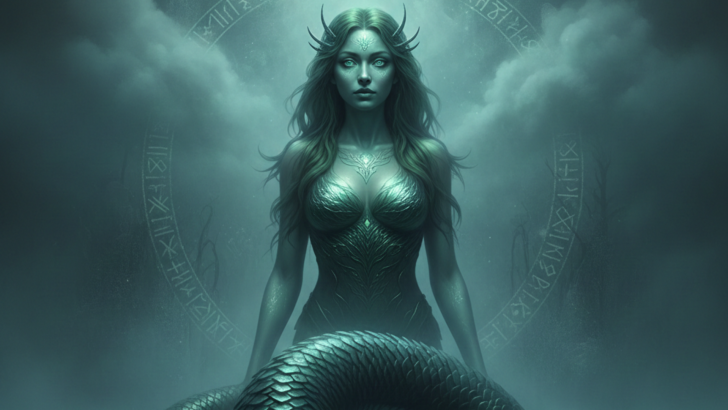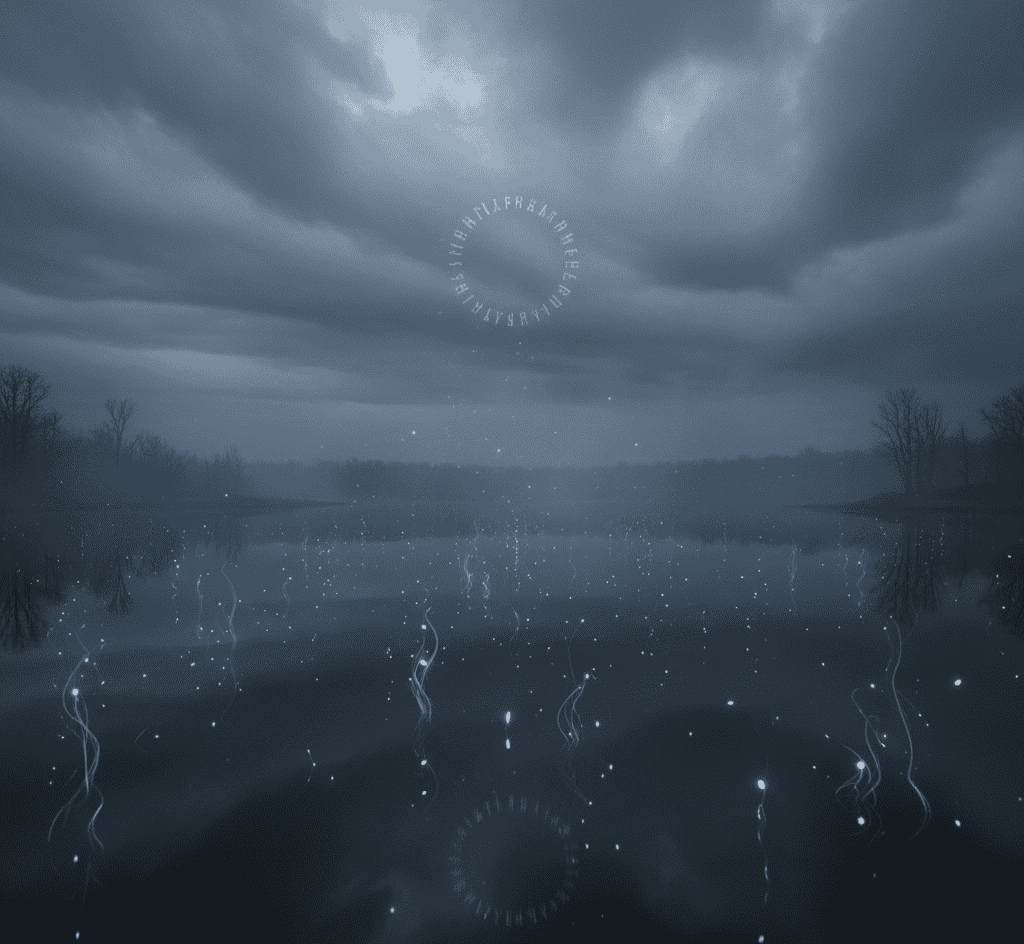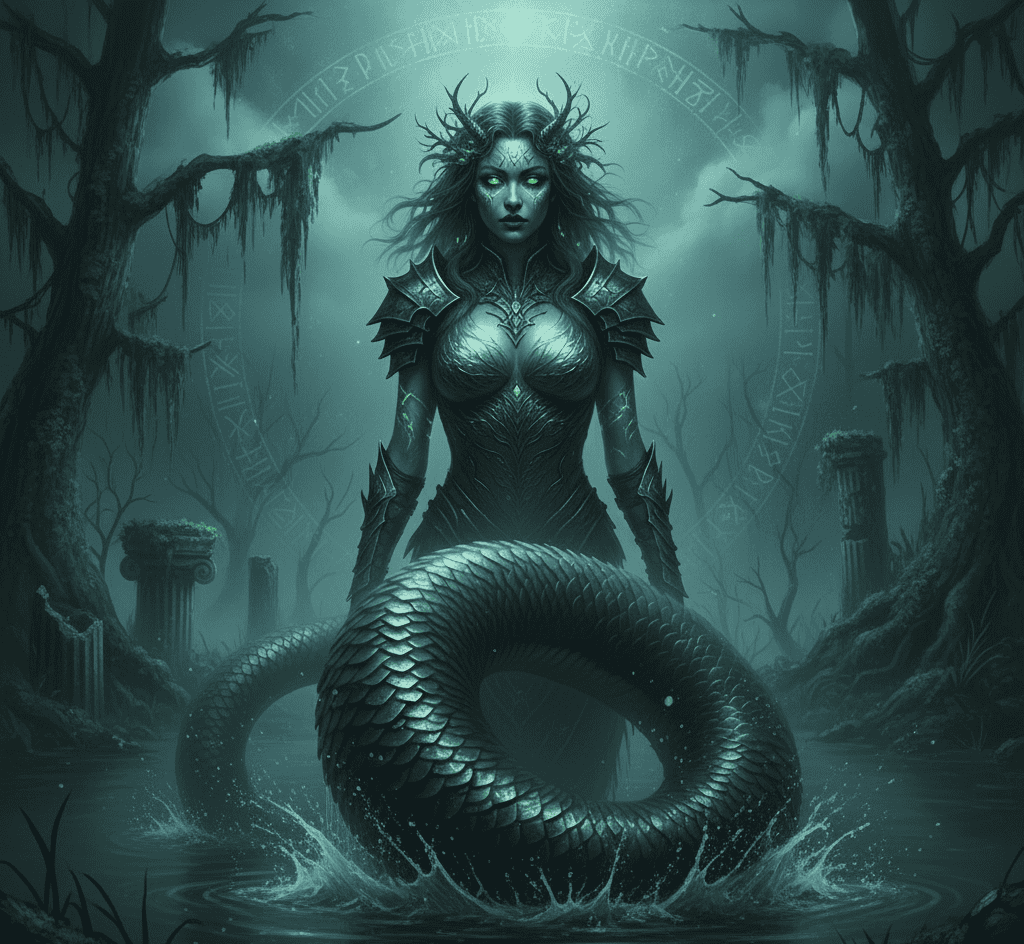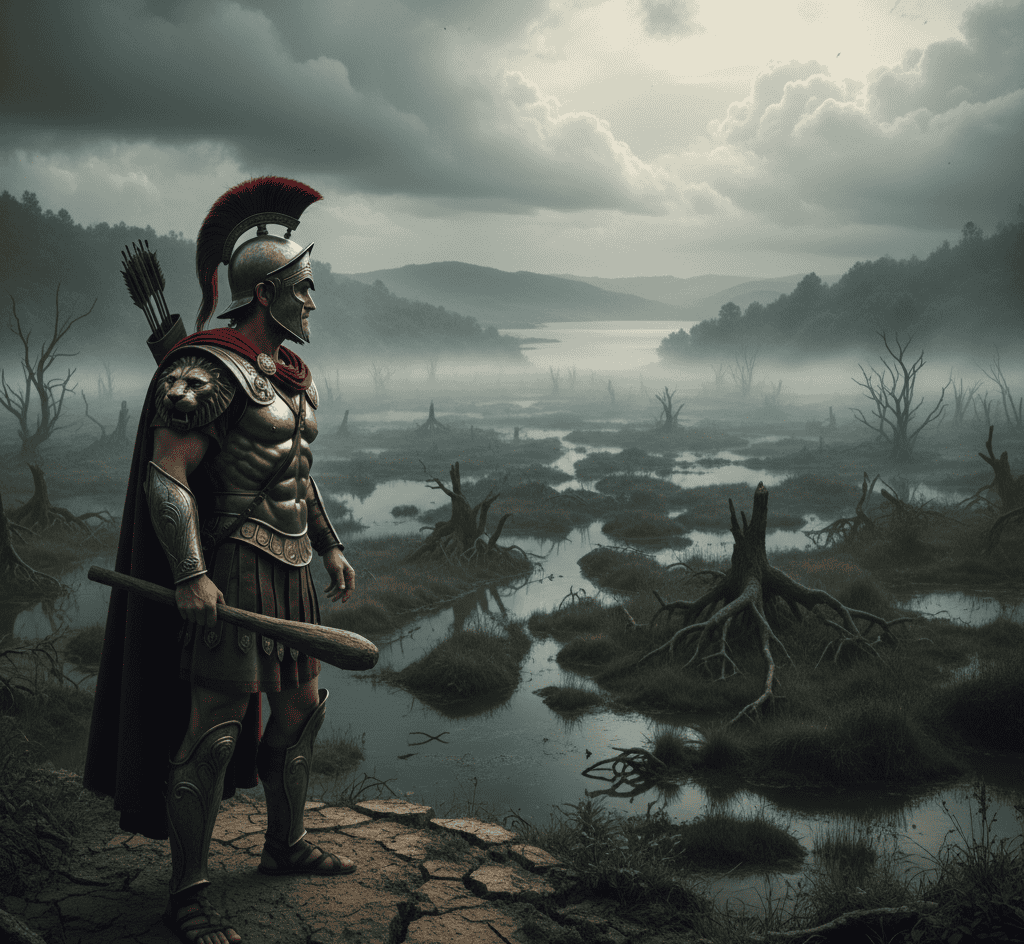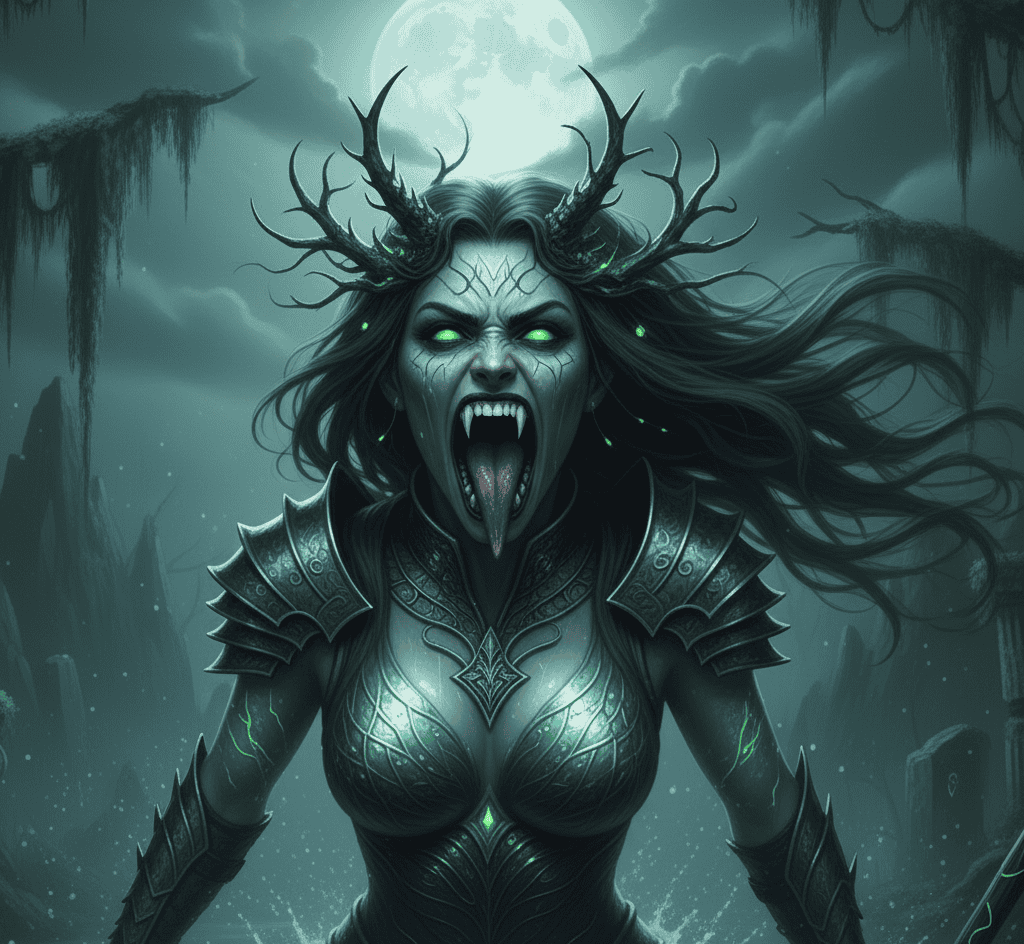Greek mythology is full of monsters that heroes rushed to battle. Dragons, giants, spirits, lions, boars, and even death itself became targets for glory seekers.
But not every creature was challenged. Some were so feared, so strange, or so sacred that even the bravest warriors turned away.
One of these beings was the Drakaina of Lake Lerna, a serpent woman tied to one of the oldest and most mysterious regions in all of Greece.
Her name was Lernaia in some late retellings, though the myths usually left her unnamed, as if even speaking her identity carried danger.
She guarded the lake, the springs beneath it, and the secrets buried in its depths. And although heroes fought monsters twice her size, almost none dared confront her.
Today, we explore why this serpent woman inspired such dread, what made Lake Lerna so terrifying, and why her legend endured long after the heroes who avoided her were forgotten.
A Lake Older Than the Gods
Lake Lerna was no ordinary body of water. Ancient Greeks believed it was a gateway to the Underworld, one of the few places where the living world and the dead world touched.
The ground around the lake was always damp, the air heavy with mist even in summer, and the waters unusually dark.
Springs bubbled beneath its surface, feeding it from unseen depths. The people of the region believed these springs reached all the way into the lower world.
It was here, according to myth, where the serpent woman dwelled. The Drakaina was not a simple monster.
Like many serpent beings in Greek lore, she was part woman, part snake, and entirely supernatural.
Her upper body was said to be beautiful, with long dark hair that dripped like river moss, and eyes that shifted color like fish scales.
Her lower body was a powerful serpent tail, patterned in greens and blues that mirrored the lake’s shifting surface.
She moved through water and land with equal grace, gliding more than walking, rising from the lake in complete silence before sliding back under without leaving ripples.
Some claimed she was older than the Olympians. Others believed she was a daughter of Phorcys and Ceto, the ancient parents of sea monsters.
A few whispered she came from the same dark depths as Echidna, the Mother of Monsters.
But no matter her origin, one thing stayed constant. She belonged to Lake Lerna, and nothing would drive her away.
The Guardian of the Hidden Springs
Unlike many monsters in Greek mythology, the Drakaina of Lerna was not a wandering terror. She had a purpose.
The lake she guarded held powerful springs believed to feed the land of Argolis.
If they were disturbed or corrupted, the entire region might fall into drought or sickness. The springs were sacred, and the Drakaina was their natural guardian.
Locals feared her, but they also respected her. Some offered small gifts at the shore.
Honeycomb, carved stones, or wreaths made from river reeds were placed at the water’s edge as tokens of peace.
People did not want her attention, but they also did not want to anger her. The Drakaina kept the lake balanced, and the lake kept the kingdom alive.
But her guardianship came with danger. Anyone who tried to fish too deeply, cut too many reeds, or attempted to drain parts of the lake risked meeting her.
Stories said she would rise from the water without warning, silent as nightfall, and wrap her coils around the trespasser before pulling them under. Bodies rarely resurfaced.
As tales spread, fewer and fewer people approached the deeper parts of Lerna. Children were warned not to wander near the waters.
New settlers were told to never swim there. And travelers taking shortcuts learned to circle widely around the lake or risk becoming another quiet disappearance.
The lake belonged to her and always would.
Even Heroes Turned Away
Greek heroes were not known for avoiding danger. Heracles fought the Hydra, a horror from the same region.
Perseus faced the Gorgons. Theseus hunted the Minotaur. Yet for all their courage, almost none of them set foot in the waters guarded by the Drakaina.
Why? Three reasons appear again and again in old stories and retellings.
First, the Drakaina was tied to sacred waters. Killing her could anger the gods, especially the chthonic deities.
Heroes might defeat monsters born from chaos, but harming a guardian spirit risked divine punishment.
Second, Lake Lerna itself was a threat. Its waters were unpredictable, and the ground around it was unstable.
The Warriors could not fight properly in mud, marsh, or waist-deep water.
Even Heracles avoided the deeper parts of the lake during his labor, choosing instead to fight the Hydra on land. Legends say he did not want to draw the Drakaina’s attention.
Third, the serpent woman was said to have powers beyond brute strength. Some stories described her voice as hypnotic.
Others said she could control the water, pulling whirlpools into being or drowning soldiers without touching them.
Fighting her would not be like facing a beast. It would be like challenging the lake itself.
The few heroes who considered facing her were warned by priests, nymphs, or even oracles. They were told the Drakaina was not an enemy to be slain.
She was part of the land. Removing her would tear something ancient and necessary from the world. And so, even the boldest warriors turned away.
The Day the Kingdom Angered the Lake
Despite the fear surrounding her, only one major story tells of the Drakaina acting in open wrath.
It happened when a local king decided to drain part of Lake Lerna to expand farmland.
He believed the serpent woman was only a myth, and even if she existed, she could not stand against human ambition.
Workers began digging trenches and diverting the water. At first, nothing happened. Some took this as a sign that the old tales were foolish.
But on the third night, when the moon reflected fully on the lake, the Drakaina emerged in a fury that shook the marshland.
Water surged over the trenches. Waves rose higher than any lake waves should. Tunnels collapsed. Workers fled in all directions.
The king’s men tried to hold the banks, but the water pulled everything back toward the center like a living force.
At dawn, the trenches were gone, the farmland destroyed, and the lake larger than before.
The king abandoned his plan. No one ever tried to drain Lerna again.
The message was clear. The Drakaina did not tolerate attempts to reshape her domain. Nature had limits, and she enforced them.
A Monster or a Protector?
Modern readers often expect clear categories. Monsters are evil. Heroes are good. But Greek mythology rarely worked that way.
The Drakaina of Lake Lerna was dangerous, yes, but she was also necessary. She protected the land, preserved sacred waters, and maintained balance in a region built around a mysterious lake.
Her legend quietly shaped the culture around Lerna for centuries. People learned respect for nature’s boundaries.
Farmers knew which areas not to touch. Fishermen understood where the waters were off-limits. Travelers learned humility in the face of the unknown.
The Drakaina was not a creature to conquer. She was one to honor.
Today, her story reminds us that not all dangers are villains. Some exist to protect, to warn, or to enforce the rules older than any kingdom.
Heroes did not fear her because she was wicked. They feared her because she was part of a world too ancient and powerful to challenge.
And sometimes the bravest choice is knowing when not to fight.

私は生まれたときから、常に神との強いつながりを感じていた。作家として、また指導者として、私の使命は、人々が最も暗い時代に愛と幸福と内なる強さを見つけるのを助けることである。

